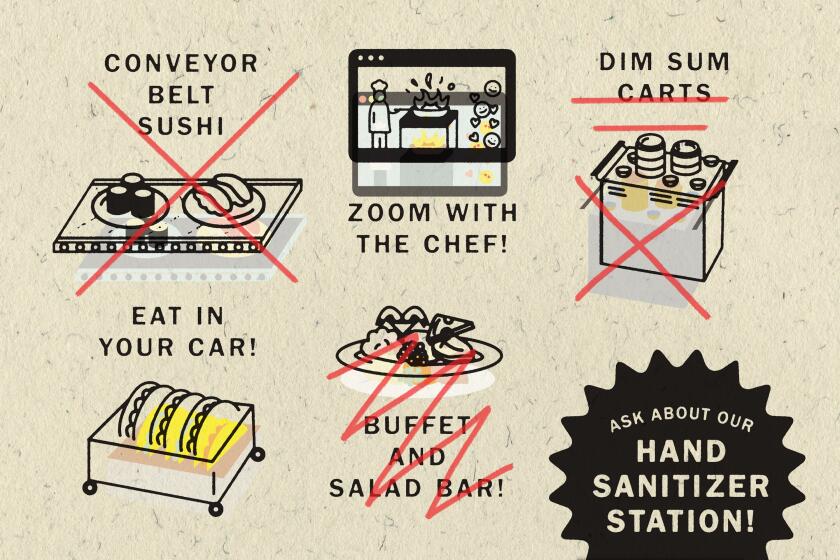Chuck E. Cheese files for bankruptcy protection

- Share via
NEW YORK — Chuck E. Cheese — where kids could be kids while parents nursed headaches — is filing for bankruptcy protection.
The 43-year-old chain, which drew kids with pizza, video games and a singing mouse mascot, was struggling even before the COVID-19 pandemic. But it said the prolonged closure of many outlets to because of restrictions related to the pandemic led to Thursday’s Chapter 11 filing.
CEC Entertainment Inc. has reopened 266 of its 555 company-operated Chuck E. Cheese and Peter Piper Pizza restaurants as restrictions ease, but it’s unclear how willing parents will be to host birthday parties and other gatherings. The Irving, Texas-based company said it will continue to reopen locations and offer carryout and delivery while it negotiates with debt and lease holders.
CEC and its franchisees operate 734 restaurants in 47 states and 16 countries. Franchised locations aren’t included in the bankruptcy filing, the company said.
CEC listed nearly $2 billion in debt and $1.7 billion in assets in its bankruptcy petition, which was filed with the U.S. Bankruptcy Court in southern Texas.
“The Chapter 11 process will allow us to strengthen our financial structure as we recover from what has undoubtedly been the most challenging event in our company’s history,” Chief Executive David McKillips said in a prepared statement.
The restaurant industry has been devastated by the pandemic. Transactions at U.S. family dining restaurants plummeted more than 80% in mid-April, the height of the pandemic in the U.S., according to the NPD Group, a data and consulting firm.
Orlando-based FoodFirst Global Restaurants, which owns the Brio Tuscan Grille and Bravo Cucina Italiana Italian restaurant chains, filed for bankruptcy protection in April. BarFly Ventures, which owns HopCat and other bars in the Midwest, filed for bankruptcy earlier this month.
Chuck E. Cheese got its start in 1977, when Atari cofounder Nolan Bushnell opened Chuck E. Cheese’s Pizza Time Theatre in San Jose. The restaurant featured a cast of animatronic characters led by Chuck E. Cheese, a plucky rat in a bowler hat that was later rebranded as a mouse. “Where a kid can be a kid,” the chain promised in its tag line.
But in recent years, the chain has struggled. Newer competitors like Dave & Buster’s offered bigger venues, while trampoline parks like Launch and AirTime offered party alternatives.
In 2014, CEC was bought by private equity firm Apollo Global Management. Under Apollo, it remodeled stores, introduced updated technology like gaming cards and revamped its menu, adding coffee drinks and premium beer and wine. It also refocused advertising to appeal more directly to parents.
In 2019, the chain’s same-store sales — or sales at venues open at least a year — were up 3%. They rose in January of this year but began falling in February and March.
The pandemic was a final straw, hammering restaurants like Chuck E. Cheese that relied on dine-in traffic and weren’t set up to do takeout.
For many, being allowed to again eat in public is a welcome small step away from where we are right now.
At one point, perhaps recognizing its disadvantage, some Chuck E. Cheese locations began offering food delivery on apps like Grubhub under the alias Pasqually’s Pizza & Wings.
Kevin Schimpf, a senior manager of industry research for the restaurant consulting firm Technomic, said Chuck E. Cheese is saddled with large stores and an abundance of high-touch surfaces at a time when many people may have mixed emotions about parties.
“Chuck E. Cheese will certainly not be the last pandemic-inflicted bankruptcy, but it will definitely be one of the most interesting to follow,” he said.
More to Read
Eat your way across L.A.
Get our weekly Tasting Notes newsletter for reviews, news and more.
You may occasionally receive promotional content from the Los Angeles Times.










